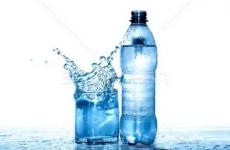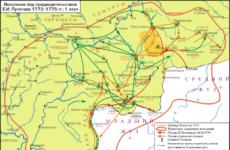Own business: production and sale of frozen vegetables and fruits. Technological line for the production of frozen vegetables, fruits and berries
Description of everything production process in detail:
- The harvest of vegetables and fruits is collected and delivered. All this adds up to 3 hours.
- Next, the acceptance process is carried out - all vegetables or fruits are checked for taste, color, size, ripeness. The inspection takes place with all production requirements and specifications.
- Vegetables/fruits are cleaned with air. This cleaning removes lighter debris from vegetables, such as petals and pods.
- Vegetables/fruits are washed to remove stones and glass using a stream of water.
- On at this stage The ends of vegetables are cut off, for example green beans.
- Then the vegetables/fruits are calibrated, that is, small fruits are eliminated.
- Blanching is carried out, that is, gas is removed from the vegetables. The taste becomes more balanced.
- It's time for blast freezing (-30°C). Within a few minutes, the temperature inside the vegetable or fruit reaches -18°C. Thanks to this method of freezing, vegetables and fruits will retain 75-90% of all beneficial vitamins, minerals and other elements. The color and taste will also be preserved, the fruit will not lose its shape and aroma.
- Vegetables and fruits are now stored at -18°C.
- The products are weighed, packaged, and marked with the production date and expiration date.
- Finished packages are packed in cardboard boxes.
- The finished product, which is intended for shipment, is stored at -18°C.
- The finished product is transported at -18°C in refrigerators.
Now in any supermarket you can find a huge amount of frozen semi-finished products, vegetables and fruits. Many products are frozen: fish, meat, confectionery, bakery, even first and second courses.
What is the advantage of freezing?
Why did chilled semi-finished products become fashionable? First of all, it is very convenient for both buyers and manufacturers. People without special costs time can cook good and tasty dish. As for manufacturers, frozen products are very profitable for them. No need to spend money on a large number of staff, and there are practically no unsold goods, which means losses are reduced and income increases. Blast freezing is currently used to cool food. What it is?
Blast freezing of food
Why is this type of storage so good? The fact is that during normal cooling, water molecules turn into crystals. The faster the freezing process itself occurs, the smaller these crystals will be. Why is it important? Yes, because only with microscopic water crystals the molecules of the products are not destroyed at all. 
This freezing is carried out in special devices. They are called shock freezers. Products are cooled in them at a temperature of -40 degrees Celsius. This allows you to freeze the core of vegetables or fruits in just two hundred and forty minutes. Thanks to this, the structure of the products remains the same. After defrosting, there is no effect of loss of liquid, neither the taste nor the consistency changes.
Benefits of blast freezing
Blast freezer compared to traditional ones refrigeration chambers allows:
- Reduce food losses several times.
- Reduce the freezing period by up to ten times.
- Reduce production area by half.
- Reduce staffing by thirty percent.
- Reduce the payback period by twenty percent.
Product structure
Blast freezing is, first of all, a high cooling rate. The temperature in the chamber reaches minus thirty-five degrees. This allows the product to quickly transition from the liquid phase to the solid phase. In this case, small crystals are formed, and the cellular tissues remain undamaged. As a result, the properties of a fresh product are preserved, unlike conventional freezing.

Blast freezing technology eliminates the need to use thermal and chemical treatment products. As a result, the type of proteins does not change at all, and therefore the biochemistry of the substances remains unchanged. Low temperature shock freezing and the very speed of the process reduce bacterial activity environment. With slow cooling, traces of bacterial activity may remain on berries, fruits and vegetables. Shock freezing virtually eliminates the development of such an effect.
Weight of products
With a long freezing process, food loses weight. This happens due to the evaporation of liquid. Usually up to ten percent is lost. Blast freezing has an accelerated cooling rate, reducing moisture loss to one percent. The difference is noticeable.

Does taste change?
Since the product does not dry out when quickly frozen, the nutritional and aromatic properties practically never get lost. This means that both nutritional qualities and taste remain the same.
Shelf life
Products chilled using the shock method have a longer shelf life than those frozen in conventional freezers. In addition, they are able to retain all qualities for more long time. It should be noted that quick freezing is best way preparations for the winter.
Popularity of frozen foods
Quick-frozen semi-finished products, products and ready meals have gained immense popularity all over the world. Their production increases every year. The range of products that are frozen around the world is unusually wide. Moreover, each country is engaged in the production of those vegetables and fruits or semi-finished products that are characteristic of of this region, climate, traditions.
Currently, the range of frozen products consists of:
- Vegetables, fruits, berries, melons, herbs, as well as various mixes of them.
- Ready-made second and first courses, pies, confectionery and bakery products.
- Fish and semi-finished meat products: steaks, entrecotes, cutlets, hamburgers, dumplings, sticks, dumplings, sausages.
- Juices, desserts, jellies, puddings, ice cream, etc.

The popularity of frozen foods is due to a number of reasons:
- Easy storage and quick readiness when needed.
- Cooking does not take much time.
- Good taste.
- The product is packaged and dosed.
- No additional preparation (such as peeling or cutting) is required.
- Almost the entire product is edible (except for the packaging).
Business
Blast freezing technology provides completely new opportunities for activity. We can say that business conditions are becoming more comfortable. When using this technology, the number of losses is significantly reduced. Moreover, the timing of the sale of the same agricultural products increases significantly, and the place of processing may be located in a completely different region.

The product can be sold in different places and even countries. There is no restriction on the seasonality of goods. In addition, the sale can be carried out with a delay in time in order to wait longer favorable price. At first, the frozen food market in Russia consisted of imported raw materials. And now, gradually, priorities have shifted towards domestic producers.
Freezing equipment
When talking about quick freezing, you need to understand that it is only possible if there is special equipment. The advantage of this technique is quick payback. The blast freezer allows you to cool semi-finished products, vegetables, and fruits.
There are different types of freezing equipment. It is divided into the following types:
- Fluidizing devices designed for freezing small raw materials from vegetables and fruits, berries, soup mixtures and stews. It is possible to cool small fish, shrimp, and mushrooms. Equipment of this type has the highest freezing speed, which means it preserves best quality products.
- Conveyor cabinets are used for freezing fish, meat, flour, dairy semi-finished products, as well as ready-made dishes: puff pastry, pancakes, cutlets, steaks, dumplings and dumplings.

- Cradle devices freeze packaged semi-finished products from fish and poultry meat, cutlets, steaks, confectionery, second and first courses.
- Spiral freezers are designed for cooling portioned products from vegetables, fruits, meat and fish, and breaded semi-finished products.
Freezing semi-finished products
Since semi-finished products are especially popular among consumers, shock freezing of dumplings, dumplings, pasties, and pancakes makes up a significant share of production.
However, there was also the new kind activities. The frozen food market has expanded with semi-finished products bakery products. Baking from frozen ingredients is very popular and in demand. There are more than a hundred items in the assortment. These include buns with additives, baguettes, and bread. Such products only need to be warmed up a little before eating. The taste of frozen baked goods does not differ from freshly baked ones. 
Experts in this field claim that such bread is made from natural products and does not contain special additives. The right technology production of bakery products from blanks makes it possible to obtain a crispy and tasty product. Naturally, obtaining good frozen semi-finished products is only possible if you have high-quality and correct equipment.
Freezing vegetables and fruits is a technology that allows them to retain their properties (taste, presence of vitamins, natural freshness) for an almost unlimited amount of time.
Find out more:

Freezing market – current situation and development prospects
The popularity of frozen vegetables among consumers has long been proven. According to BusinesStat agency estimates, the volume of the frozen vegetable market in our country is 310 thousand tons. This figure refers to 2015. Currently, due to the protracted crisis, there is a slight drop in demand, but nevertheless, from 2017, sales of these products are expected to increase by 1.7 - 3.4% per year. Today, most of the products appearing on this market are different estimates up to 80% comes from neighboring countries - China, Poland, etc. The economic situation has led to the activation of domestic entrepreneurs who decided to master the business of freezing vegetables.
The range of products that can be frozen includes:- vegetables;
- fruits;
- herbs;
- mushrooms.
They are used in the production of homemade food and in the public catering system. This determines the circle of main consumers - these are retail retail chains, large supermarkets, enterprises producing confectionery products, etc., fast food restaurant chains.


Basic costs of organizing production
It can be argued that this type of entrepreneurship is seasonal. That is, the market decline occurs in the spring and persists until the fall. But in the summer, the entrepreneur is actively working on purchasing raw materials and forming warehouse stocks.
The costs necessary to ensure the operation of a workshop that uses blast freezing include:- purchase of raw materials, costs for electricity, heat, water;
- wages, payment for rent of space, transport, etc.;
Production technology
Deep freezing technology is performed in several steps:- cleaning of raw materials - acceptance of vegetables and fruits;
- sorting;
- slicing;
- mixing;
- shock cooling of vegetables to the following parameters from + 12 to – 18 degrees, for this you need freezer deep frozen;
- packaging and shipping finished products to consumers.
Necessary technological equipment
To organize the work of a workshop with a capacity of 2,400 kg per shift, the following deep-freezing equipment is required:- blast freezing chamber – about $40,000;
- chamber for storing frozen products - about $7,000;
- technological equipment, including baths for washing raw materials, devices for peeling potatoes, tables for processing semi-finished products, digesters, etc. - about $5,500;
- semi-automatic equipment for packaging finished products - about $4,500;
- various auxiliary equipment and technological containers - about $800.


It is easy to calculate that the main costs of purchasing necessary equipment will amount to about $57,800. But if the budget for promoting this type of business is limited, then you can reduce costs by purchasing equipment on the market of lower power and with a lower level of automation. In addition, you can always find used equipment, such as blast chillers, and thus save from $18,000 to $24,000.
The approximate payback period and reaching the full estimated profit is three to four years.
Subtleties of working in the deep-frozen market
An analysis of the activities of companies operating in this market shows that, despite relatively high profitability and little competition among domestic producers, they have enough difficulties.
The first is relationships with consumers. For the most part, their circle includes retail chains and large supermarkets. As a rule, they may require certain preferences. In some networks, the volume of preferences can be up to $390 per position.


The second most important problem is raw materials, or rather their quality. Each manufacturer has its own concepts of quality and this cannot but cause difficulties in the purchasing process. In addition, because of this, problems arise with the formation of inventory. The best option agreements will be concluded with those enterprises producing agricultural products that are able to fulfill all the requirements for the quality of products intended for freezing.
In practice, it is difficult to determine which frozen products will be in demand in the coming season. If contracts with consumers are not concluded by the start of mass sales, then the invested funds can be considered lost.
Currently, the annual growth in the production of such food products increases by 10%. Demand is also growing, which gives reason to think about opening a business for freezing berries, vegetables and fruits with their subsequent sale.
Why is the demand for frozen fruits, berries and vegetables growing?
In the process of manufacturing products, shock freezing technology is used.
The principle here is as follows: the temperature inside the fruit drops to -300C in just a few minutes.
Diets and fasting by many people are also factors that contribute to the rise in popularity of freezing. In such cases, such food is ideal.
Another reason for the increased demand for fruits and vegetables processed by blast freezing is the high level of employment of the fair sex.
Everything is simple here: a woman forced to spend a lot of time at work refuses to preserve food for the winter. This is where store-bought frozen vegetables and fruits come to the rescue. If you have such products on hand, soup, salad, dessert or other dish can be prepared in 15 minutes.
What can you freeze?
Using the blast freezing method, processed products are widely used by housewives as ingredients for preparing homemade dishes, by cooks working in catering establishments, and by confectioners.
The main groups of natural gifts that can be frozen include:
- strawberries, peaches, pears, apples, raspberries, apricots, cherries;
- dill, parsley, rosemary, basil;
- potatoes, corn, tomatoes, cabbage, pumpkin, broccoli, carrots, spinach, onions, peas;
- oyster mushrooms, champignons (mushrooms).
Frozen goods can be stored in this form before use for up to 2 years.
Required equipment
 Acquisition of all necessary equipment for opening own production will cost approximately 4 million rubles.
Acquisition of all necessary equipment for opening own production will cost approximately 4 million rubles.
This is if we take the productivity of 300 kilograms of product per hour as a guideline.
But there is also an opportunity to reduce costs by purchasing less powerful freezing units, as well as purchasing a manual line for packaging goods instead of an automated one.
In addition, you can buy equipment that has already been used (used). In this case, productivity will drop to 100 kilograms per hour, but the costs will be no more than 1.5 million rubles.
In order to open a workshop you need to purchase:
- quick-freezing tunnel.
- A freezer for storing the resulting products.
- Digestive boiler.
- Vegetable cutter.
- Potato peeler.
- Production table.
- Washing bath.
- Equipment for packing.
- Containers and equipment.
In addition to everything, it is also necessary to have a premises for production and storage.
Production stages
 The step-by-step workflow consists of a number of steps. They are as follows:
The step-by-step workflow consists of a number of steps. They are as follows:
- harvest and delivery;
- acceptance of berries, vegetables, mushrooms or fruits and determination of their taste qualities, appearance, degree of ripeness;
- cleaning the gifts of nature from debris, petals, pods;
- washing to remove glass and stones;
- separating the ends, for example, of green beans;
- screening out small fruits;
- shock freezing;
- weighing, packaging, applying the required information to the packaging;
- packaging packages in cardboard containers;
- shipment of finished products.
Transportation of frozen fruits, vegetables, berries and mushrooms is carried out in special refrigerators at a temperature not exceeding -180C. Since the acquisition and maintenance of such Vehicle entails high costs, it is worth using the services of carrier companies.
Seasonality
Peak sales in this business occur at winter months and early spring, since fresh fruits are unavailable to buyers at such times or their prices are sky-high.
Summer is the time to purchase raw materials, process them and fill warehouses. The big advantage of gifts of nature frozen using this method is that they are not perishable and can be stored in proper conditions for up to 24 months.
Sales
A well-organized process of marketing manufactured goods is one of the main components of business success.
If such activities are carried out in small town, there are greater opportunities to agree on the sale of products with store and supermarket owners.
In large locality you will have to pay for your product to appear on the shelves of shopping centers.
An important point is to establish contacts with cafes, canteens, fast foods, and restaurants. Tasting events and various promotions will also help increase sales.
The funds invested in the development of the business are fully returned within 3-4 years.
We also offer you a video on this topic:
The essence of the idea is to open a workshop for blast freezing fruits and vegetables for subsequent sale to consumers (for catering, confectionery, for ordinary citizens) during the season.
The frozen food market in Russia is constantly developing; according to experts, annual growth is 10%, in 2012-2016. Sales of frozen fruits and vegetables will grow by an average of 8% per year. If in the 90s. The main supplies of these products were carried out from abroad, but now Russian suppliers have significantly increased their market share, replacing imported products with domestic ones.
Assortment of frozen vegetables, fruits and berries

The range of products that can be frozen is huge, the main groups being:
- Vegetables: tomatoes, pumpkin, broccoli, cabbage, spinach, onions, carrots, potatoes, peas, corn
- Fruits and berries: apples, pears, apricots, peaches, cherries, strawberries, raspberries
- Herbs: parsley, dill, basil, rosemary
- Mushrooms: champignons, oyster mushrooms
Frozen vegetables and fruits are used:
- in preparing homemade dishes (vegetable side dishes, mixtures, baked goods)
- in public catering (French fries, side dishes, desserts)
- V confectionery production(cakes, pastries)

Technology
The production process of frozen vegetables and fruits consists of next stages:
- Cleaning of raw materials
acceptance of raw materials, primary rejection
sorting - carried out on a conveyor belt
- Mixing
- Freezing (from -40 to -120 degrees)
- Package
- Storage
Required equipment
To open a workshop with a capacity of 300 kg. per hour, the following minimum set of equipment is required:
- Quick-freezing tunnel - 2.8 million rubles.
- Freezer (storage) - 500 thousand rubles.
- Equipment for preparing vegetables (washing bath, potato peeler, production table, vegetable cutter, food boiler) - 350 thousand rubles.
- Equipment for packaging finished products (semi-automatic) - 300 thousand rubles.
- Inventory and containers - 50,000 rubles
The cost of purchasing equipment with a productivity of 300 kg per hour will be about 4 million rubles. At limited budget, it is possible to purchase less powerful quick-freezing equipment, as well as purchase a manual packaging line, and to reduce costs, some of the equipment can be purchased used.
With this option, you can get by with a much smaller amount. So the cost of creating a business with a productivity of 100 kg. per hour (part of the equipment is used, packaging manually) will amount to only 1.2-1.5 million rubles.
In the section equipment for the production of frozen vegetables and fruits, you can familiarize yourself with options for equipping a production site that differ from those described in the article.
Feasibility study of activities
As mentioned above, the type of business in question is seasonal. Sales growth occurs during the period when fresh vegetables and fruits become less available (winter months). The decline occurs in the spring months and sales are especially strong in summer. But summer and autumn months It’s also a “hot” time, but only for purchasing high-quality raw materials and working in a warehouse.
The graph below shows revenue fluctuations using the example of a real company operating in this segment.
 Example financial indicators vegetable freezing companies
Example financial indicators vegetable freezing companies
The costly part of the workshop activities includes the following groups of expenses:
- Manufacturing cost (purchase of raw materials, electricity costs)
- General expenses (payroll, premises rental, transportation costs, etc.)

As can be seen from the graph, the average annual profitability of activities before taxes is 18%.
The return on investment in organizing the production of frozen vegetables and fruits depends on sales activity, the availability of markets, and product quality. On average, payback periods are 2-2.5 years.






